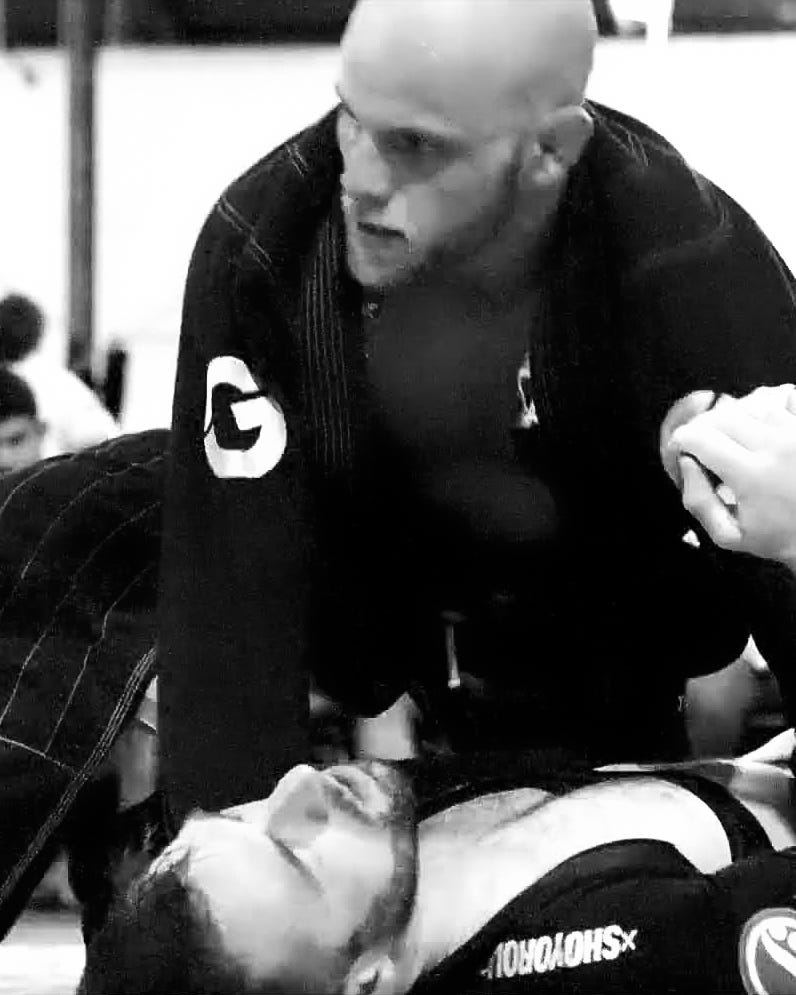Grappling is simple, and complex. It isn't inherently complicated: connect, control, isolate, break. However, endless feeds of instructionals, YouTube videos, and Instagram highlights make "making a training plan" much more complicated than it needs to be.
Recently we had several promotions at our gym; many blue belts and a couple purple belts. Of course that the “black belt table” had an annual discussion about criteria for each belt as well as each individual.
In my opinion, the only belt that a “curriculum” makes sense for is blue belt, because that’s essentially want a blue belt represents to me – a fundamental curricular understanding.
From there I’m looking for growth, capability, composure, character, and other much more nuanced criteria that are specific to the individual person. So, where does how do you decide “what to focus on” in training?
After all, general classes are geared towards the general public and may not be geared towards you or even something you have very much control over.
Getting Started:
There are a few oversimplified options that all have some merit and potential. I can chose to work on:
What I’m already good at.
What I like doing.
What I’m not good at.
What I need to do.
One could of course ask their coaches or training partners for this feedback – and you still should – but it’s also an important developmental milestone to figure some of this out for yourself. That whole “critical thinking” part…
Focusing on what you’re good at isn’t a bad option if you’re headed into a competition / season. It’s a time to prune and sharpen, not to build breadth and expand.
What I like doing is probably pretty close to what you’re good at, and this should be regularly sprinkled into training to keep morale high and making sure we enjoy these silly games and achievements we setup for ourselves in life.
Doing what I’m not good at isn’t fun, but it’s where we have the most room to grow. Everybody makes mistakes; in life and in jiu jitsu. Nobody’s game is perfect – under all conditions, against all opponents, forever.
What you need to do is likely a combination of each of those things at different times in a given year and certainly throughout a career lifespan. However, the importance of this question also includes non-technical components. Do I need to be stronger? Do I need better endurance? Should I watch film? Do I watch instructionals, competitions, or my own matches / sparring rounds? Again, all of those things have a place.
Road Map: A Simple Analysis
One way I like to think about this is with a mirror; a hypothetical question.
If I were going to fight against myself, what would my strategy be?
Obviously the complexity of this question, and your ability to answer it usefully varies based on your skills and experience. But that’s not the point, it’s a relevant question regardless of your level or training age.
For example, if I looked at myself and thought my most obvious strengths were:
Physicality,
Wrestling, and
Leg locks.
A road “road map” might mean focusing my training on things to hypothetically counter that:
Emphasis on tactics and strategy (to counter physicality),
Tactical guard pulls (to avoid getting scored on), and
Heavy passing and aggressive grip fighting (hands and feet).
You could also look at this from a deficit perspective. Maybe I’m not “bad” from any position, but where am I the weakest, or what positions do I know the least about or am the most uncomfortable in?
When I’m mounted?
Do I get countered more often in one leg entanglement than others?
Is there a particular sweep, submission, or guard pass that’s my kryptonite?
Delivery and Commitment:
This is the hard part. It’s a useful mental exercise to think about these things and write them out. It’s another story to actually follow through on the plan. Specifically, not just following through to check the box on a training log or post about it on social media.
Did you stick with it enough to make sure the problem is no longer a problem?
Unfortunately, this is probably going to take more than a comfortable 30-days. If you only train twice / week, that’s only 8 sessions / month. 8 session are, of course, not useless, but the scope of change that you can accomplish in 10 sessions versus 50 is astounding.
I just threw those numbers out there, but we probably see exponential jumps with “the rule of three.” There may not be a huge difference between training once or twice per week, but the difference between once per week and three times per week is massive.
Likewise, if you stuck to a training plan for one month versus three, that’s 4 weeks versus 12. The effect compounds when we add duration to the frequency.
One session / week for one month is 4 sessions working on a thing. Three sessions per week, even if one is “for fun” and the other two are for “business”, spread over three months is 24 sessions working on that same “thing you want to get better at.”
Conclusion:
In summary, we have a simple prompt for building a recurring evaluation and training plan for ourselves. The question what do I need? can be answered by further exploring what would I focus on if I needed to compete against myself?
Like what you’re reading? Subscribe or Shop Affiliates!



If I were going to fight myself, what would my strategy be? Love it. Invert perspectives on yourself to determine best training opportunities. Excellent post